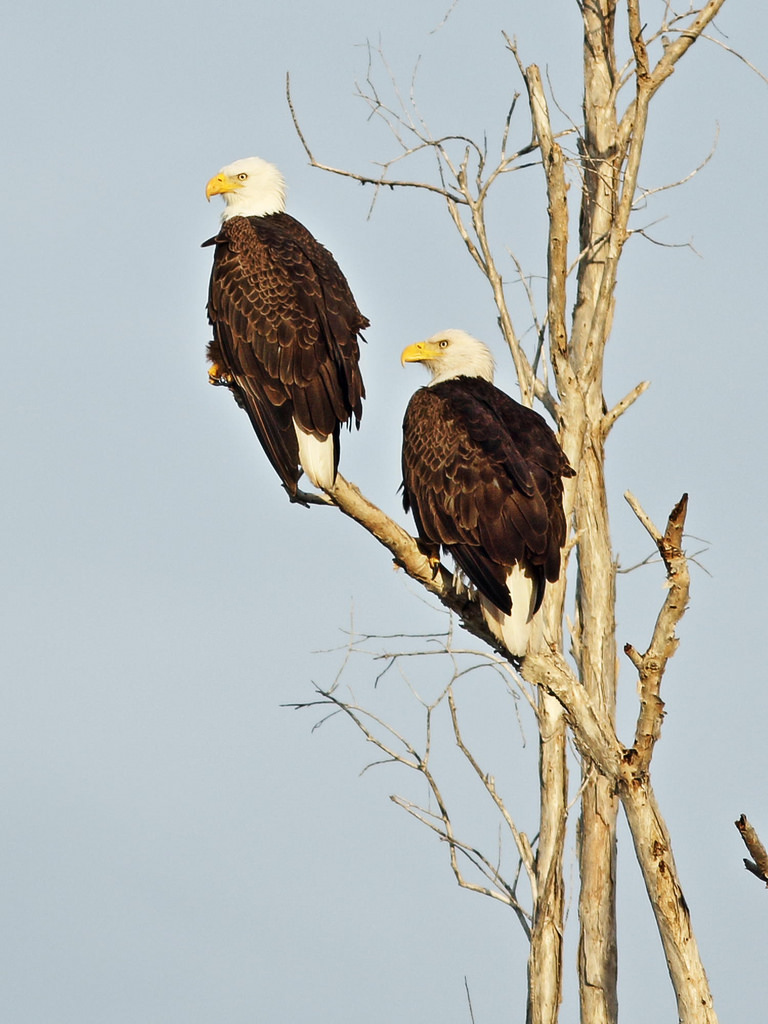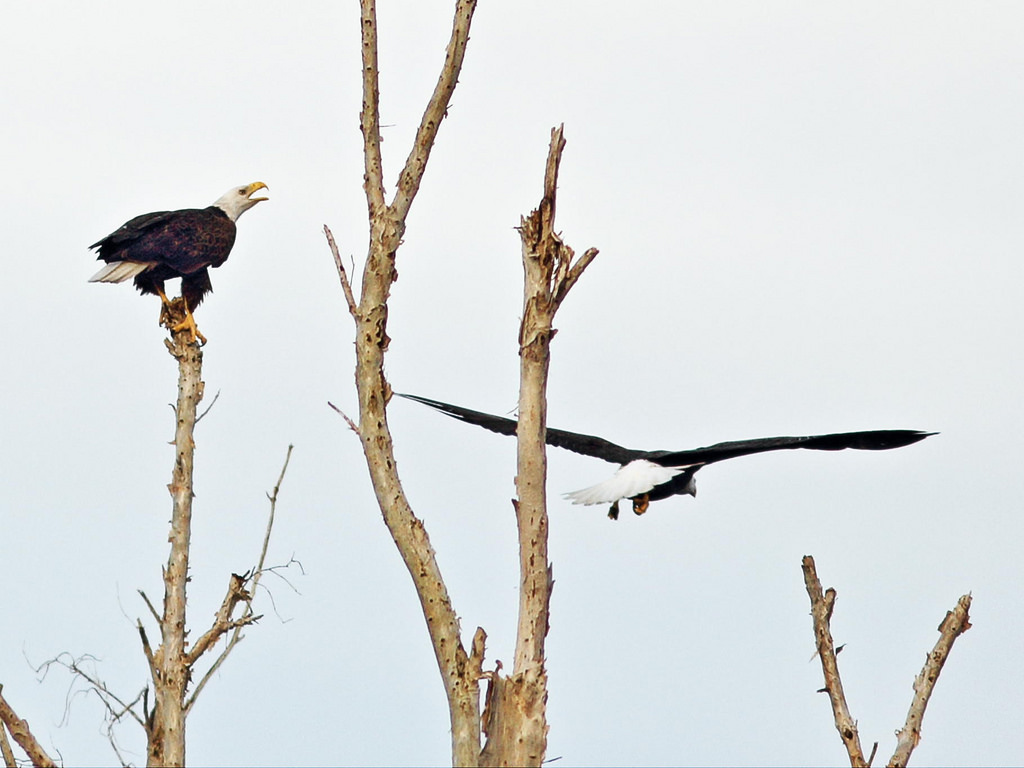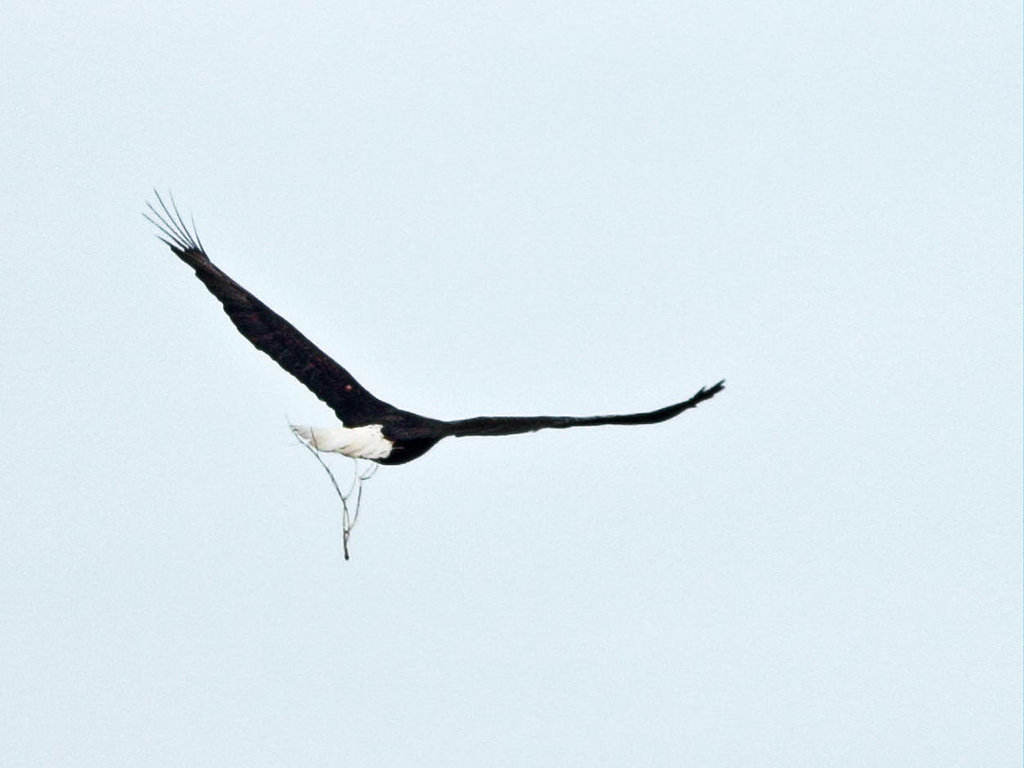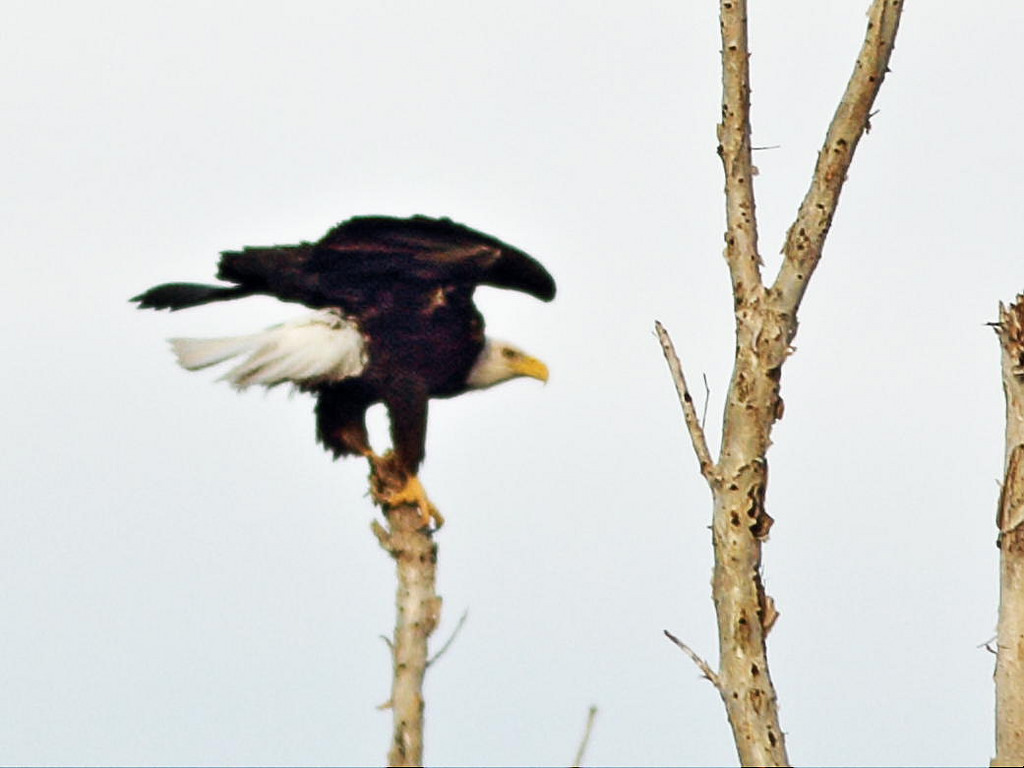Bald Eagles of Broward County, Florida
› ARCHIVED Pembroke Pines OBSERVATIONS & PHOTOS FROM PRIOR NESTING SEASONS
›
ARCHIVED 2015-2016 Observations of Pembroke Pines Bald Eagle Nest BO-002
Pride and Jewel fight off immature eagle 1.4 miles SE of nest
Pride and Jewel fight off immature eagle 1.4 miles SE of nest
|
Administrator
|
This post was updated on .
This morning at 7:23 AM while walking out into the west Miramar Water Conservation Area, I heard and then spotted Bald Eagles, about 1/4 mile away at the north end of the preserve. As I moved nearer I could see that there were two adults and a second year juvenile.
The juvenile can be seen in the upper right corner of this photo. The male eagle is flying to a perch and the female is at lower right.  The adults chased the youngster and he flew up and circled, still quite far away for good photos. It appears to be in second year plumage.  The two adults roosted in the grove of herbicide-killed Melaleucas on the far side of the wet prairie. The smaller of the two perched up higher.  I took comparable photos from several positions of each from a range of 650 to 400 feet, using the same crop factor so that I could compare their size and shape. Male eagle at 500 feet range:  Female at same range-- she is obviously quite bigger:  At 7:47 AM the female started calling and flew up and roosted just behind the male.  At 7:58 AM the female flew to a higher perch about 100 feet farther along the grove of dead trees.  She assumed a receptive position and both eagles kept calling as the male flew and briefly mounted her.   They did not copulate, and the male then quickly flew to a nearby snag and at 8:00 AM flew off to the north.   The female roosted a while longer, then at 8:02 flew up and circled to the north, carrying a small branch.  From the distinctive undertail markings when she sliced, I identified the female as Jewel, from the Pembroke Pines nest which is 1.4 miles to the NW. Note the two fine streaks under the tail and a few dark feathers among undertail coverts.  Jewel also has distinctive markings at the base of her uppertail coverts.  The male is presumably Pride, her mate. This behavior, and the fact that the pair has not spent much time at or near the nest over more than a week and that there is no evidence of survival of the eaglet that hatched on or about JAN 17 (which the adult was photographed feeding on JAN 19) lead me to conclude that the nest has been abandoned.
Ken Schneider
Web site: http://rosyfinch.com Blog: http://rosy-finch.blogspot.com Photos: <http://flickr.com/photos/rosyfinch> |
|
There was an eagle on the melaleucas again this morning, Saturday. It was very early, 5:40 and still dark. I did a U-turn to verify as I only spotted the white in the dark. Just one eagle. I suspect it was Pride as that is his home base and maybe the new female is not so attached to it yet.
|
«
Return to ARCHIVED 2015-2016 Observations of Pembroke Pines Bald Eagle Nest BO-002
|
1 view|%1 views
| Free forum by Nabble | Edit this page |

